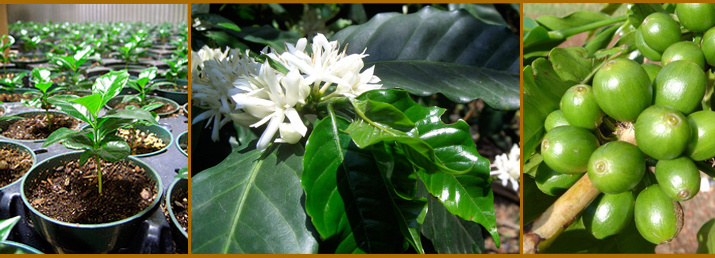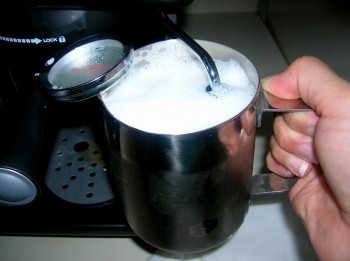The ripening process of Coffee beans from flowering to ripening Coffee beans
It takes about 9 months (32-36 weeks) for coffee to mature from flowering to ripening. Today, Chongqing Beresta Coffee training School is here to share with friends the whole process of coffee bean growth and ripening.
[tiny stage] (the first 8 weeks) Arabica coffee begins to divide eight weeks after flowering and fertilization.
[preemptive site stage] (8-12 weeks) the vesicle cavity (with ovary) begins to expand rapidly with the expansion of the seed coat, and the space for expansion will be the endosperm, that is, the growth space of coffee beans.
The size of the expansion depends to some extent on the moisture content in the soil, and if the soil is dry (during the dry season), the seed coat expansion will be smaller and the final coffee beans will be smaller.
[endosperm development stage] (12-20 weeks) endosperm began to develop, consuming and absorbing seed coat.
[endosperm development stage] the endosperm continues to grow until the seed coat is completely absorbed, leaving a thin layer of seed coat that will cover the endosperm, also known as the silver coat; at this stage, most of the endosperm material is in a gelatinous state, and will continue to grow and develop in the next few months, forming the dry matter tissue of coffee beans.
[adult] (20-32 weeks) the pericarp and pulp of coffee fruit will continue to grow, and the endosperm will absorb 70% of the total energy of photosynthesis for its own growth.
[ripening stage] (32-36 weeks) when the coffee fruit grows to adult size, after a month or so, the coffee fruit begins its ripening and discoloration process, from green to yellow to red

Important Notice :
前街咖啡 FrontStreet Coffee has moved to new addredd:
FrontStreet Coffee Address: 315,Donghua East Road,GuangZhou
Tel:020 38364473
- Prev

Coffee bean boutique Kaddura, Kaduai, bourbon in Arabica Guatemala Vivetnam fruit producing area
The Republic of Guatemala, a presidential republic in Central America, is located in the south of the North American continent. It is bordered by the Pacific Ocean to the west, the Caribbean Sea to the east, Mexico to the north, Belize to the northeast, Honduras and El Salvador to the southeast, with a total area of 108889 square kilometers. All of Guatemala is made up of mountains and plateaus. In the west, there are Kuchu Matanes Mountains.
- Next

China Coffee Network to judge the quality of milk foam four standards how to make milk foam is good
Friends who have just come into contact with coffee still have a big problem with how to judge the quality of milk bubbles, and what they share is how to judge the quality of milk bubbles. On how to judge the quality of milk foam every time I communicate with friends, I only get some very general results. Standard one: milk foam should be delicate, for example: be delicate (what is delicate? No one can explain it clearly in precise words.
Related
- Guji coffee producing area of Guji, Ethiopia: Humbela, Shakiso, Wulaga
- What is the most expensive variety of Qiloso in BOP multi-variety group?
- How to store the coffee beans bought home?
- Why are Yemeni coffee beans so rare now?
- Ethiopian Sidamo all Red Fruit Sun Sun Santa Vini Coffee beans
- SOE is mostly sour? What does it mean? Is it a single bean? what's the difference between it and Italian blending?
- Is Italian coffee beans suitable for making hand-brewed coffee?
- How to choose coffee beans when making cold coffee? What kind of coffee beans are suitable for making cold coffee?
- Just entered the pit to make coffee, what kind of coffee beans should be chosen?
- Can only Japan buy real Blue Mountain Coffee? What are authentic Jamaican Blue Mountain coffee beans?

